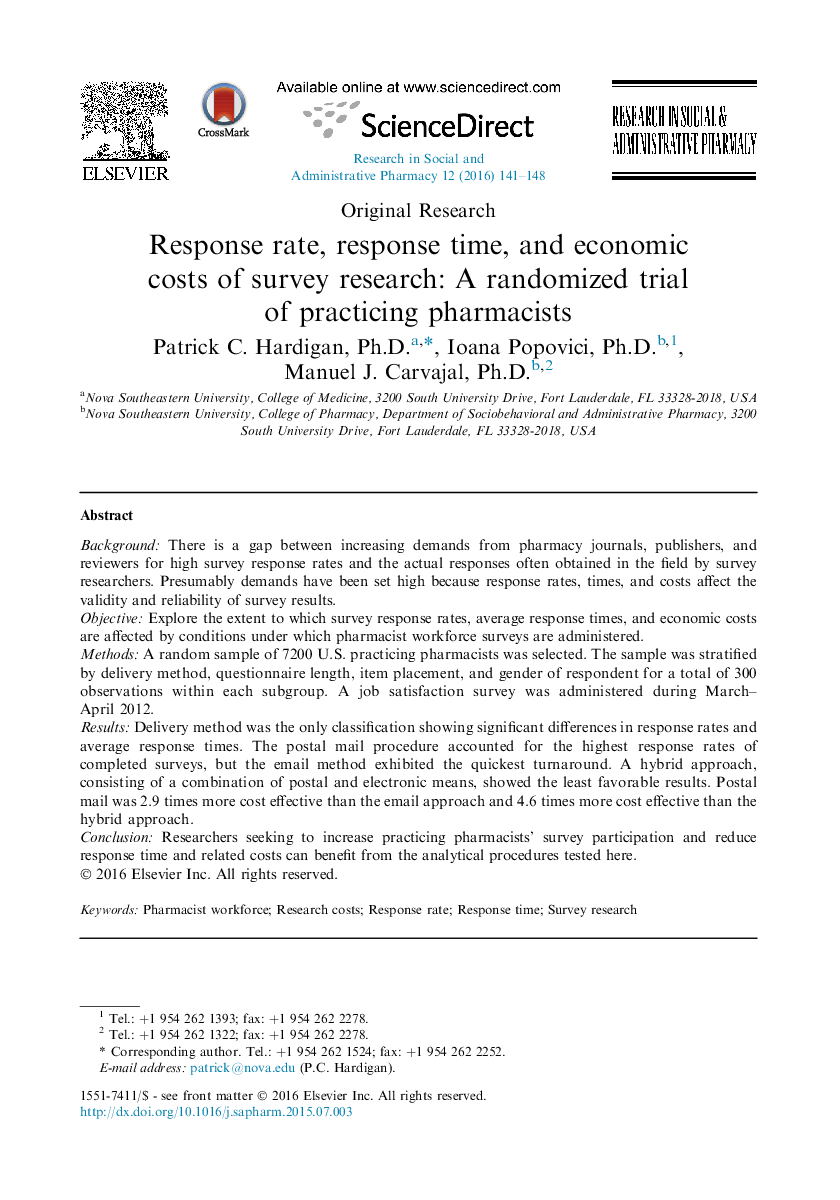| Article ID | Journal | Published Year | Pages | File Type |
|---|---|---|---|---|
| 2508270 | Research in Social and Administrative Pharmacy | 2016 | 8 Pages |
BackgroundThere is a gap between increasing demands from pharmacy journals, publishers, and reviewers for high survey response rates and the actual responses often obtained in the field by survey researchers. Presumably demands have been set high because response rates, times, and costs affect the validity and reliability of survey results.ObjectiveExplore the extent to which survey response rates, average response times, and economic costs are affected by conditions under which pharmacist workforce surveys are administered.MethodsA random sample of 7200 U.S. practicing pharmacists was selected. The sample was stratified by delivery method, questionnaire length, item placement, and gender of respondent for a total of 300 observations within each subgroup. A job satisfaction survey was administered during March–April 2012.ResultsDelivery method was the only classification showing significant differences in response rates and average response times. The postal mail procedure accounted for the highest response rates of completed surveys, but the email method exhibited the quickest turnaround. A hybrid approach, consisting of a combination of postal and electronic means, showed the least favorable results. Postal mail was 2.9 times more cost effective than the email approach and 4.6 times more cost effective than the hybrid approach.ConclusionResearchers seeking to increase practicing pharmacists' survey participation and reduce response time and related costs can benefit from the analytical procedures tested here.
